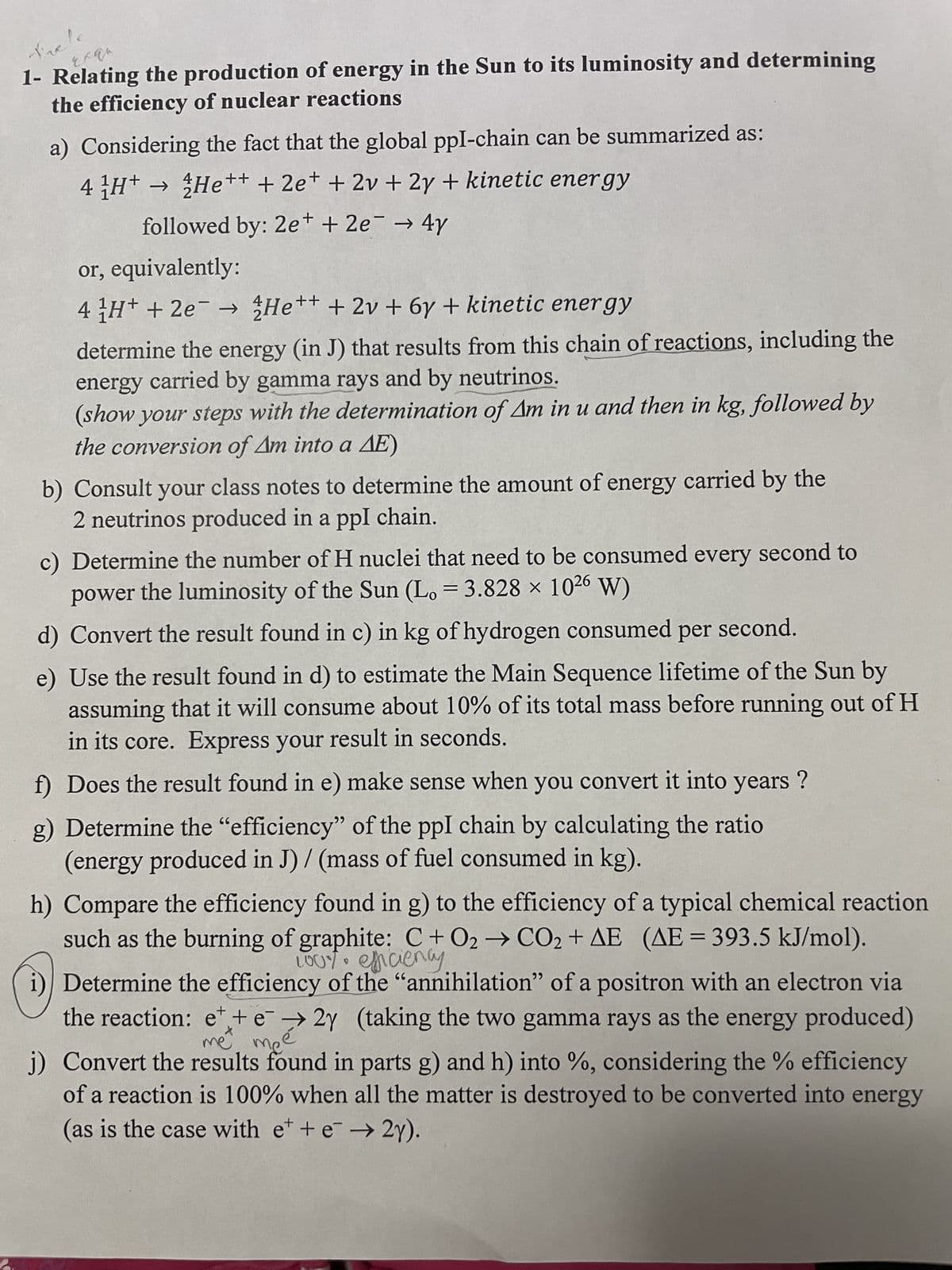C and D
Related questions
Question
C and D

Transcribed Image Text:Trele
qu
1- Relating the production of energy in the Sun to its luminosity and determining
the efficiency of nuclear reactions
a) Considering the fact that the global ppl-chain can be summarized as:
4 ¹H+ → He++ + 2e+ + 2v + 2y + kinetic energy
followed by: 2e+ + 2e → 4y
-
or, equivalently:
4 H+ + 2e¯¯ → He++ + 2v + 6y + kinetic energy
determine the energy (in J) that results from this chain of reactions, including the
energy carried by gamma rays and by neutrinos.
(show your steps with the determination of Am in u and then in kg, followed by
the conversion of Am into a AE)
b) Consult your class notes to determine the amount of energy carried by the
2 neutrinos produced in a ppl chain.
c) Determine the number of H nuclei that need to be consumed every second to
power the luminosity of the Sun (Lo = 3.828 x 1026 W)
d) Convert the result found in c) in kg of hydrogen consumed per second.
e) Use the result found in d) to estimate the Main Sequence lifetime of the Sun by
assuming that it will consume about 10% of its total mass before running out of H
in its core. Express your result in seconds.
f) Does the result found in e) make sense when you convert it into years?
g) Determine the "efficiency" of the ppl chain by calculating the ratio
(energy produced in J)/ (mass of fuel consumed in kg).
h) Compare the efficiency found in g) to the efficiency of a typical chemical reaction
such as the burning of graphite: C+02 → CO₂ + AE (AE=393.5 kJ/mol).
100% efficiency
9
i) Determine the efficiency of the "annihilation" of a positron with an electron via
the reaction: et + e2y (taking the two gamma rays as the energy produced)
met
sé
j) Convert the results found in parts g) and h) into %, considering the % efficiency
+
of a reaction is 100% when all the matter is destroyed to be converted into energy
(as is the case with et + e→ 2y).
me
Expert Solution
This question has been solved!
Explore an expertly crafted, step-by-step solution for a thorough understanding of key concepts.
Step by step
Solved in 2 steps
